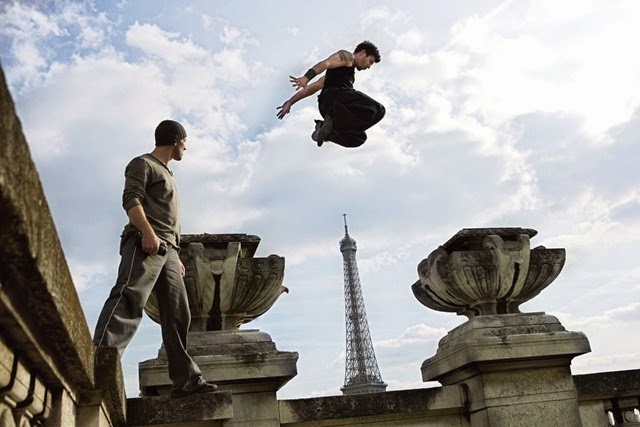Parachuting, or skydiving, is the action sport of exiting an aircraft and returning to Earth with the aid of gravity, then slowing down during the last part of the descent by using a parachute. It may or may not involve a certain amount of free-fall, a time during which the parachute has not been deployed and the body gradually accelerates to terminal velocity.
Andre-Jacques Garnerin was the first to make successful descents using a canvas canopy and small basket, tethered beneath a hot-air balloon. The first intentional freefall jump with a ripcord-operated deployment is credited to Leslie Irvin in 1919.
The military developed parachuting technology as a way to save aircrews from emergencies aboard balloons and aircraft in flight, and later as a way of delivering soldiers to the battlefield. Early competitions date back to the 1930s, and it became an international sport in 1952.
Disciplines and maneuvers
Accuracy
One example of this is "Hit and Rock", a variant of Accuracy landing devised to let people of varying skill levels compete for fun. "Hit and Rock" is originally from POPS (Parachutists Over Phorty Society). The object is to land as close as possible to the chair, remove the parachute harness, sprint to the chair, sit fully in the chair and rock back and forth at least one time. The contestant is timed from the moment that feet touch the ground until that first rock is completed. This event is considered a race.
Atmonauti
Atmonauti is a human flight technique invented by Marco Tiezzi in 1998. Developed and perfected with the help of Gigliola Borgnis, it was presented for the first time in 2000 at the World Freestyle Competitions, the European Espace Boogie, and the Eloy Freefly Festival.
The technique consists of flying diagonally with a determinate relation between angle and trajectory speed of the body, to obtain an air stream that permits lift and a precise control of flight. The aim is to fly in formation at the same level and angle, and to be able to perform different aerial games, such as freestyle, three-dimensional flight formation with grip, or acrobatic freeflying.
Cross-country
A cross-country jump is a skydive where the participants open their parachutes immediately after jumping, with the intention of covering as much ground under canopy as possible. Usual distance from Jump Run to the dropzone can be as much as several miles.
The more popular one is to plan the exit point upwind of the drop zone. A map and information about the wind direction and velocity at different altitudes are used to determine the exit point. This is usually set at a distance from where all the participants should be able to fly back to the drop zone.There are two variations of a cross-country jump:
The other variation is to jump out directly above the drop zone and fly down wind as far as possible. This increases the risks of the jump substantially, as the participants must be able to find a suitable landing area before they run out of altitude.
Two-way radios and cell-phones are often used to make sure everyone has landed safely, and, in case of a landing off the drop zone, to find out where the parachutist is so that ground crew can pick them up.
Night jumps
Parachuting is not always restricted to daytime hours; experienced skydivers sometimes perform night jumps. For safety reasons, this requires more equipment than a usual daytime jump and in most jurisdictions it requires both an advanced skydiving license (at least a B-License in the U.S.) and a meeting with the local safety official covering who will be doing what on the load. A lighted altimeter (preferably accompanied with an audible altimeter) is a must. Skydivers performing night jumps often take flashlights up with them so that they can check their canopies have properly deployed.
Visibility to other skydivers and other aircraft is also a consideration; FAA regulations require skydivers jumping at night to be wearing a light visible for three miles (5 km) in every direction, and to turn it on once they are under canopy. A chem-light(glowstick) is a good idea on a night jump.
Night jumpers should be made aware of the Dark Zone, when landing at night. Above 30 meters (100 feet) jumpers flying their canopy have a good view of the landing zone normally because of reflected ambient light/moon light. Once they get close to the ground, this ambient light source is lost, because of the low angle of reflection. The lower they get, the darker the ground looks. At about 100 feet and below it may seem that they are landing in a black hole. Suddenly it becomes very dark, and the jumper hits the ground soon after. This ground rush should be explained and anticipated for the first time night jumper.















.jpg)
.jpg)
